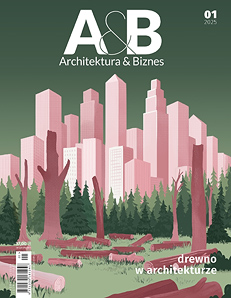In Poland, young people often lack adequate urban spaces that meet their needs. The lack of places to spend time safely and comfortably and the systemic ignorance of their voice in urban planning leads to exclusion.
Perhaps when you've been in a shopping mall you've seen groups of strolling young people, perhaps you've also noticed them in fast-food restaurants, occupying two adjacent tables, with phones plugged in[1]. But have you given any thought to why this is so?
Personally, I link this phenomenon to the very low turnout among the youngest voters. Only 25.9% of voters between the ages of 18 and 29 cast a ballot[2]. If we broke the group down even further, we would probably find an even greater correlation, that the younger the voters, the lower the turnout. The PWN Encyclopedia defines youth as a social category of young people, that is, those in a transitional state between childhood and adulthood (maturity). Its definitions vary, but in terms of phases of human development, the age limits for youth are assumed to be between the ages of 11 and 19.
Why am I juxtaposing these two phenomena? Because I have a belief that we systemically teach self-government and democracy at a young age. Until the age of eighteen you are an invisible entity adrift in the system. Ostensibly, it is children and fish that have no voice, but in our case the word "child" ends the moment you come of age.
Young people, understood as those aged 10 - 19 (the CSO allows such filtering), make up 10% of today's society[3], and therefore a significant part of the urban population. It seems obvious that their needs and problems should be taken into account in urban planning. Unfortunately, many Polish cities lack adequate spatial solutions that take into account the specific needs of young people.
youth to thee nectar of life
Adultism is systemic discrimination against young people based on their age. In cities, it often manifests itself through a lack of consultation with young people during the creation of urban policy and ignoring their needs in public space. Young people often have no say in city development decisions, leading to the creation of spaces that do not meet their needs.
Although an amendment to the law[4] prepared by the Government Plenipotentiary for Youth Policy came into force in June 2021, which for the first time introduced a legal basis for the establishment of youth councils at the county and provincial levels, and significantly supplemented the existing regulations for youth councils in municipalities, the body continued to function for many years without having a causal role. The youth council is a statutory youth self-government body that represents the interests of youth to local government bodies, implements youth in the mechanism of local government structures, and works for the integration and cooperation of youth communities. The council has a consultative, advisory and initiative function.
According to the Law[5], the tasks of the youth council include, in particular, giving opinions on draft resolutions concerning youth, participating in the development of strategic documents of the municipality for the benefit of youth, monitoring the implementation of strategic documents of the municipality for the benefit of youth, taking action for thefor the benefit of young people, especially in the field of civic education, under the terms and conditions set by the municipal council, and participation in activities related to the development and implementation of government strategic documents on youth policy. However, this is an optional body, its formation is not required. So formally, no one is speaking up for youth spaces in many municipalities.
The result is a lack of dedicated youth spaces. Young people need spaces that allow them to develop, integrate socially and spend their free time in a safe and non-restrictive way. Many Polish cities lack such enclaves for the young, leading to the exclusion of young people from urban life. Stereotypically, seething groups of young people are associated with behaving noisily, occupying playgrounds, sitting on the backs of benches, or loitering aimlessly in shopping malls. However, these behaviors are not directed against any social group, they are simply an attempt to find their way around the city. Among the things listed by young people when asked what is missing in the city, we find such demands as:
-
a deficit of places that provide both security and privacy,
-
the desire to be in a place without direct adult supervision,
-
the lack of a place to stay (e.g., to do homework) without having to interact or participate in activities.
In one of the posts in which I addressed this topic, many interesting comments and observations were made. One person comments: "The worst thing is to be a teenager. Playgrounds are for kids. Then entertainment +18. Zero places where you could sit and talk or meet. A person wandered around the estate or sat on the cages. There was not enough space in the apartment in the block, well, and sharing a room with siblings was not conducive to meetings either."
let whom age has clouded, bowing down to the ground a counseled forehead
While researching this topic, I have encountered many times the statement that, after all, such places as libraries and community centers function. Yes, however, it should be remembered that, firstly, they are available on designated days and times, and secondly - the library most often orders to remain quiet, the community center - for specific activities.
In that case, how about a skatepark or an eagle? For many people this is a great place to spend time actively, but here too we must bear in mind that it is an open space, accessible only on a sunny day - there are no covers or canopies. The place is most often characterized by a lack of toilets or places to eat. It is also unheated. It is boys who use the sports facilities more often than girls, and the layout itself makes us centrally consider such activities - those who do not actively participate are most likely to passively observe the players. On the opposite extreme of such land use is Plaça d "en Baró in Barcelona. It's a space designed in collaboration with local users, so it provides functionally different, interconnected areas. As a result, it does not focus to one soccer field in the center.
Finally, someone brought up the subject! In downtown Lodz, kids who skateboard have set up a makeshift skatepark in the square in front of the theater, because they have no other option. The square has been empty for years, and I hope they will consider their needs in the new revitalization plans. The rest of the teenagers, on the other hand, sit in parks on benches or at checker tables. Other than that, they loiter in shopping malls and that's it. The cities don't have a better space for them, but you'd also have to ask them what kind of space they need.
Add to this the fact that the older you get, the more often you decide on a better school. The rankings are dominated by those establishments located in the centers of larger cities. Those who live outside the city have to commute. Sometimes they are given a ride by their parents, but most often young people opt for a kind of independence, choosing public transportation. Why do I use the term "of sorts"? Because the farther the municipality is from the central center, the worse the quality of connection by the public transportation network.
The phenomenon of transportation exclusion currently affects about 13.8 million people in Poland[6]. As a result, young people often have to commute to school, which, in the case of an underdeveloped transportation network, leads to deepening exclusion. The lack of adequate transportation links limits mobility, hindering their access to education, culture and entertainment. Thus, the only bus sometimes arrives an hour, an hour and a half before lessons. Young people try to manage this time somehow, for example by visiting a store.
@jdaria_ yes
♬ Honey Raspberry - Mig
Regardless of the region, various studies indicate that the key places that youth are missing are primarily accessible youth clubs, places for informal gatherings where young people can spend time in a friendly atmosphere. That's why so often when asked what places are missing, young people point to the need for a cheap pizzeria, another fast food place. For many young people, such places are coworking and educational spaces. These are cheap or free places to study and work on projects, equipped with outlets and internet[7].
there reach where sight does not reach
Young people in Polish cities often don't have their own place, a problem that calls for a new look at who owns a city and who has the right to decide about it. In order to improve the situation of young people, it is necessary to take their needs into account in urban planning processes and to counter the adultist approach to design. It is essential to create dedicated spaces for young people, develop transportation infrastructure and include young people in decision-making processes. Only in this way can cities become welcoming places, while at the same time teaching them so that the lump of the world can be pushed onto new tracks.
Some Polish cities are already taking such initiatives. One example is Lublin, which opened "Space Hey!" as part of the European Youth Capital 2023 celebrations. Other recommended venues include Sopot's Sopoteka and Krakow's Pracownie Młodych. However, these are only selected locations that do not cover entire cities. What is needed is a network of such places, encircling the city, so that also young people excluded by transportation have their own spaces to stay and develop their interests. They must also be created on the basis of dialogue and teaching responsibility, causality, trust in the process of social involvement.
Magdalena Milert
[1] J. Stefanska, A. Wieczorek, J. Kowalski, A. Tyminska (2020). Diagnosis of leisure time needs of Wawersian youth;
[2] https://www.pap.pl/aktualnosci/ktorzy-wyborcy-glosowali-najchetniej-kto-wykazal-najmniejsze-zainteresowanie
[3] Data as of 2024.06.20 per BDL GUS.
[4] on municipal self-government, the law on county self-government, the law on provincial self-government and the law on public benefit activity and volunteerism for https://www.gov.pl/web/dlamlodych/mlodziezowerady
[5] Law of March 8, 1990 on municipal self-government
[6] https://instytutsprawobywatelskich.pl/ile-znaczy-wykluczenie-transportowe/
[7] B. Bielska, M. Hoffman, T. Kaminski (2014). Diagnosis of the needs for places and ways of spending leisure time by young people living in the Chełmińskie estate in Toruń.














